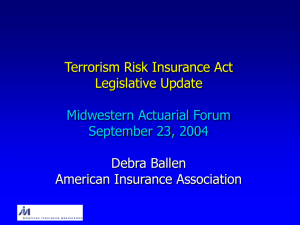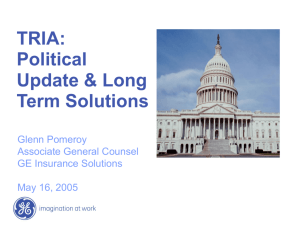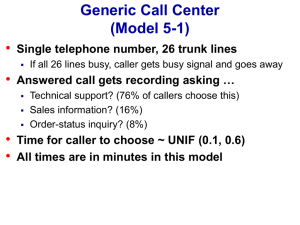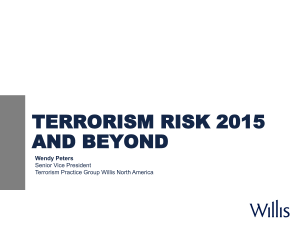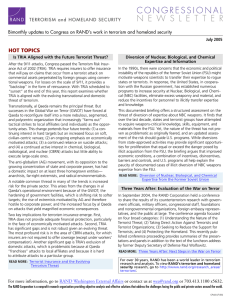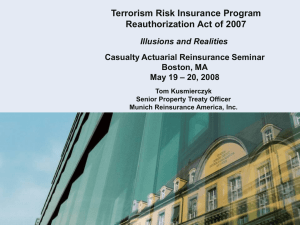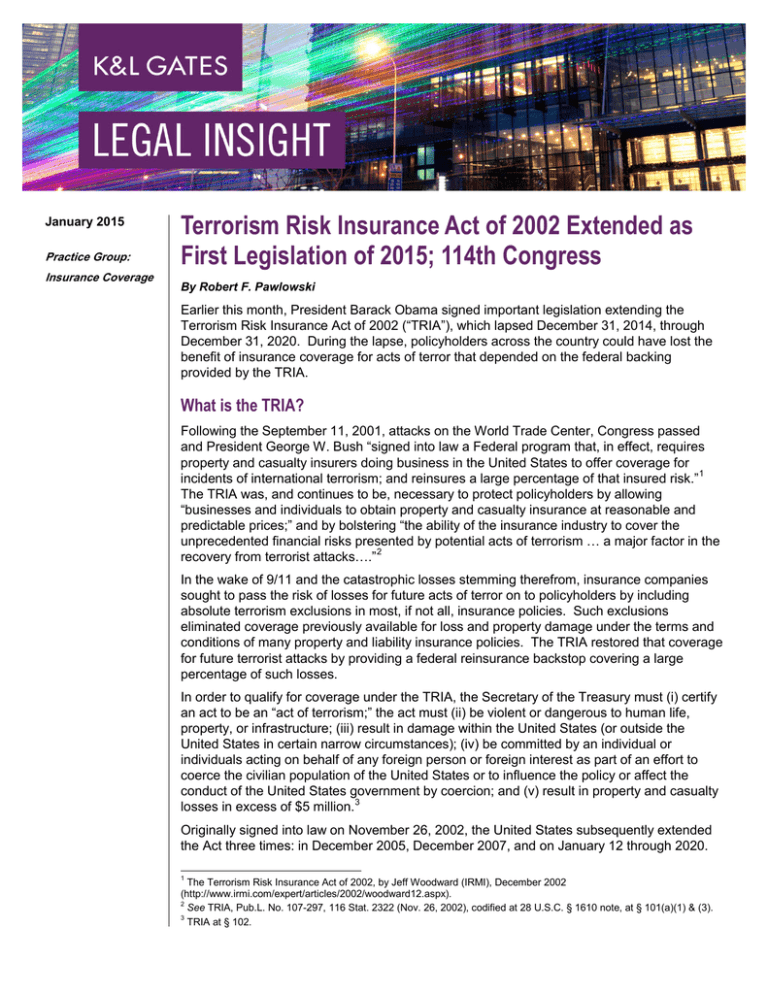
January 2015
Practice Group:
Insurance Coverage
Terrorism Risk Insurance Act of 2002 Extended as
First Legislation of 2015; 114th Congress
By Robert F. Pawlowski
Earlier this month, President Barack Obama signed important legislation extending the
Terrorism Risk Insurance Act of 2002 (“TRIA”), which lapsed December 31, 2014, through
December 31, 2020. During the lapse, policyholders across the country could have lost the
benefit of insurance coverage for acts of terror that depended on the federal backing
provided by the TRIA.
What is the TRIA?
Following the September 11, 2001, attacks on the World Trade Center, Congress passed
and President George W. Bush “signed into law a Federal program that, in effect, requires
property and casualty insurers doing business in the United States to offer coverage for
incidents of international terrorism; and reinsures a large percentage of that insured risk.”1
The TRIA was, and continues to be, necessary to protect policyholders by allowing
“businesses and individuals to obtain property and casualty insurance at reasonable and
predictable prices;” and by bolstering “the ability of the insurance industry to cover the
unprecedented financial risks presented by potential acts of terrorism … a major factor in the
recovery from terrorist attacks….” 2
In the wake of 9/11 and the catastrophic losses stemming therefrom, insurance companies
sought to pass the risk of losses for future acts of terror on to policyholders by including
absolute terrorism exclusions in most, if not all, insurance policies. Such exclusions
eliminated coverage previously available for loss and property damage under the terms and
conditions of many property and liability insurance policies. The TRIA restored that coverage
for future terrorist attacks by providing a federal reinsurance backstop covering a large
percentage of such losses.
In order to qualify for coverage under the TRIA, the Secretary of the Treasury must (i) certify
an act to be an “act of terrorism;” the act must (ii) be violent or dangerous to human life,
property, or infrastructure; (iii) result in damage within the United States (or outside the
United States in certain narrow circumstances); (iv) be committed by an individual or
individuals acting on behalf of any foreign person or foreign interest as part of an effort to
coerce the civilian population of the United States or to influence the policy or affect the
conduct of the United States government by coercion; and (v) result in property and casualty
losses in excess of $5 million.3
Originally signed into law on November 26, 2002, the United States subsequently extended
the Act three times: in December 2005, December 2007, and on January 12 through 2020.
1
The Terrorism Risk Insurance Act of 2002, by Jeff Woodward (IRMI), December 2002
(http://www.irmi.com/expert/articles/2002/woodward12.aspx).
2
See TRIA, Pub.L. No. 107-297, 116 Stat. 2322 (Nov. 26, 2002), codified at 28 U.S.C. § 1610 note, at § 101(a)(1) & (3).
3
TRIA at § 102.
Terrorism Risk Insurance Act of 2002 Extended as First Legislation of 2015;
114th Congress
Congress easily passed the bill by a vote of 416-4 on January 7, 2015, in the House of
Representatives and by a vote of 93-4 in the Senate a day later. Policyholders can breathe
a sigh of relief for the time being, but should monitor Congress’s future efforts to extend the
bill, and encourage their representatives to see to it that Congress continues to extend the
TRIA in perpetuity.
Author:
Robert F. Pawlowski
robert.pawlowski@klgates.com
+1.973.848.4032
Anchorage Austin Beijing Berlin Boston Brisbane Brussels Charleston Charlotte Chicago Dallas Doha Dubai Fort Worth Frankfurt
Harrisburg Hong Kong Houston London Los Angeles Melbourne Miami Milan Moscow Newark New York Orange County Palo Alto Paris
Perth Pittsburgh Portland Raleigh Research Triangle Park San Francisco São Paulo Seattle Seoul Shanghai Singapore Spokane
Sydney Taipei Tokyo Warsaw Washington, D.C. Wilmington
K&L Gates comprises more than 2,000 lawyers globally who practice in fully integrated offices located on five
continents. The firm represents leading multinational corporations, growth and middle-market companies, capital
markets participants and entrepreneurs in every major industry group as well as public sector entities, educational
institutions, philanthropic organizations and individuals. For more information about K&L Gates or its locations,
practices and registrations, visit www.klgates.com.
This publication is for informational purposes and does not contain or convey legal advice. The information herein should not be used or relied upon in
regard to any particular facts or circumstances without first consulting a lawyer.
© 2015 K&L Gates LLP. All Rights Reserved.
2

